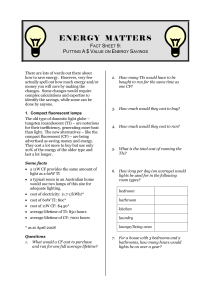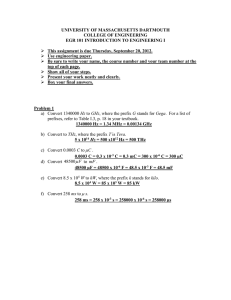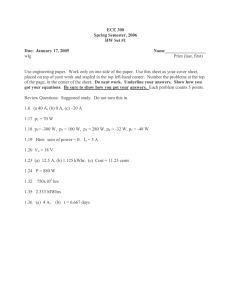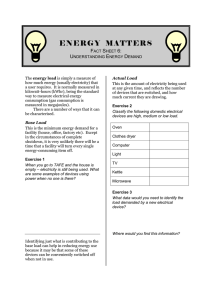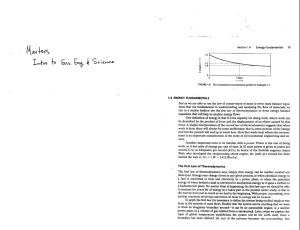E N E R G Y ... F S
advertisement
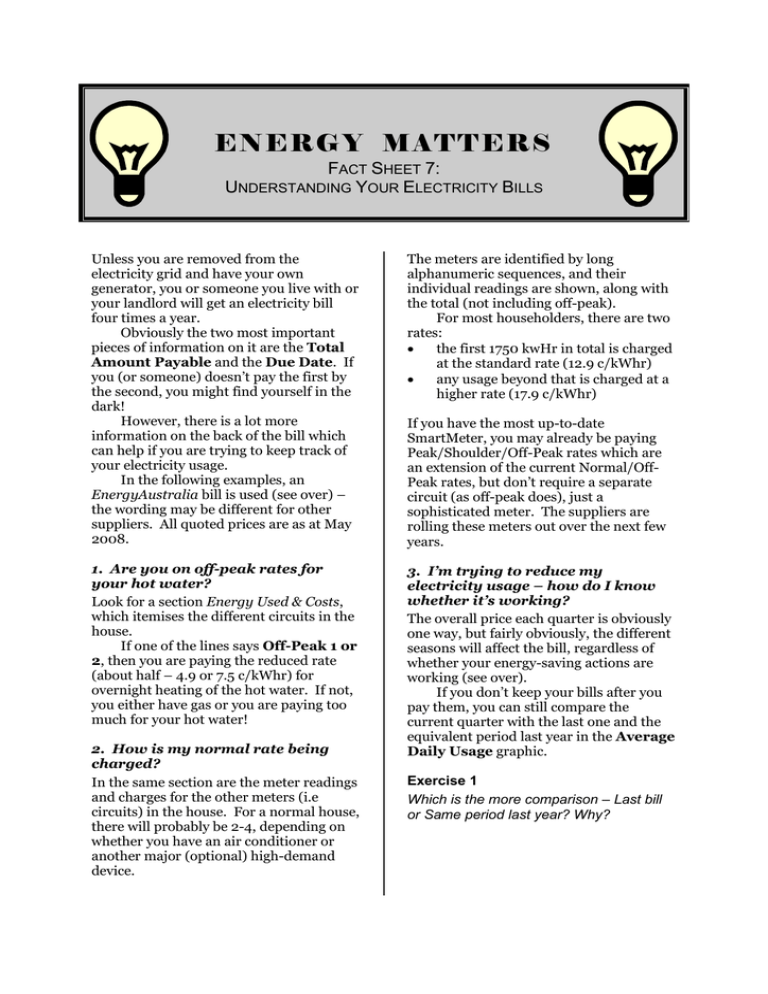
E NE RG Y MAT TER S FACT SHEET 7: UNDERSTANDING YOUR ELECTRICITY BILLS Unless you are removed from the electricity grid and have your own generator, you or someone you live with or your landlord will get an electricity bill four times a year. Obviously the two most important pieces of information on it are the Total Amount Payable and the Due Date. If you (or someone) doesn’t pay the first by the second, you might find yourself in the dark! However, there is a lot more information on the back of the bill which can help if you are trying to keep track of your electricity usage. In the following examples, an EnergyAustralia bill is used (see over) – the wording may be different for other suppliers. All quoted prices are as at May 2008. 1. Are you on off-peak rates for your hot water? Look for a section Energy Used & Costs, which itemises the different circuits in the house. If one of the lines says Off-Peak 1 or 2, then you are paying the reduced rate (about half – 4.9 or 7.5 c/kWhr) for overnight heating of the hot water. If not, you either have gas or you are paying too much for your hot water! 2. How is my normal rate being charged? In the same section are the meter readings and charges for the other meters (i.e circuits) in the house. For a normal house, there will probably be 2-4, depending on whether you have an air conditioner or another major (optional) high-demand device. The meters are identified by long alphanumeric sequences, and their individual readings are shown, along with the total (not including off-peak). For most householders, there are two rates: • the first 1750 kwHr in total is charged at the standard rate (12.9 c/kWhr) • any usage beyond that is charged at a higher rate (17.9 c/kWhr) If you have the most up-to-date SmartMeter, you may already be paying Peak/Shoulder/Off-Peak rates which are an extension of the current Normal/OffPeak rates, but don’t require a separate circuit (as off-peak does), just a sophisticated meter. The suppliers are rolling these meters out over the next few years. 3. I’m trying to reduce my electricity usage – how do I know whether it’s working? The overall price each quarter is obviously one way, but fairly obviously, the different seasons will affect the bill, regardless of whether your energy-saving actions are working (see over). If you don’t keep your bills after you pay them, you can still compare the current quarter with the last one and the equivalent period last year in the Average Daily Usage graphic. Exercise 1 Which is the more comparison – Last bill or Same period last year? Why? 4. How much carbon dioxide am I responsible for electricity-wise? It is shown under the Average Daily Usage graphic. By itself, it doesn’t really mean much, since it hard to imagine what 2131.3 kg of CO2 really means in the overall picture. It is simply the kWhr multiplied by a conversion factor. If you are actively trying to do things that will save electricity, then you really should be keeping your bills, or at least recording the kWhr values for each meter. 2500 Total kWhr 2000 1500 1000 500 er Su m m rin g Sp in W Au te r n tu m er Su m m rin g Sp te r in W Au tu m n 0 2006-7 Typical total household electricity consumption Energy Matters 7: Understanding Your Energy Bill page 2 of 2
